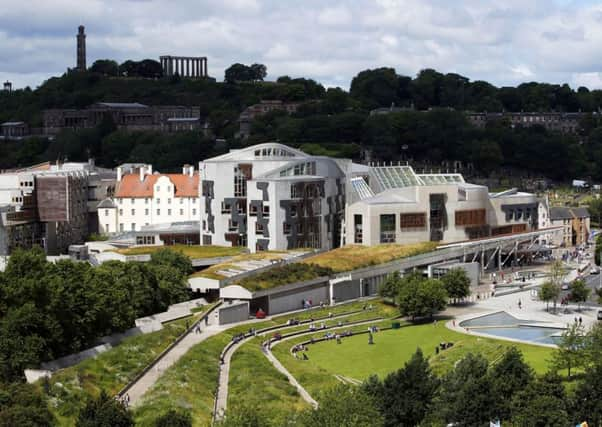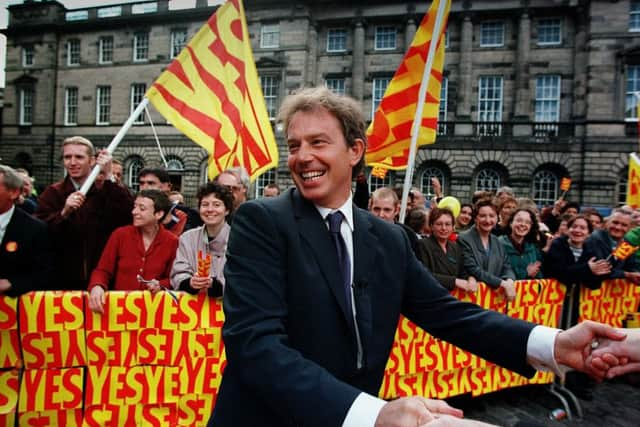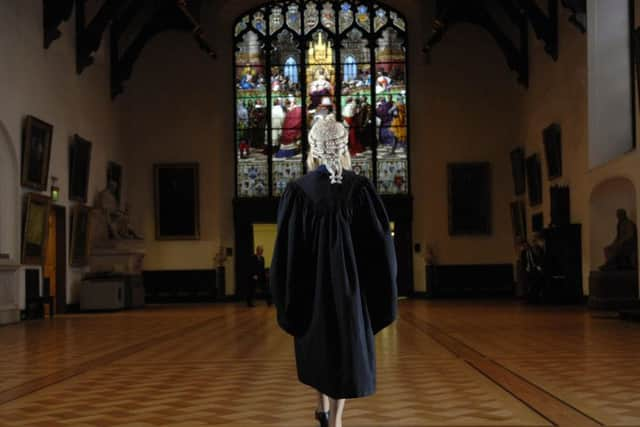Scottish Parliament at 20: How Holyrood forged a link with the public


Every national assembly, no matter its size or political make-up, claims its authority from the people it represents. But the relationship between the Scottish Parliament and the wider public has always been especially close.
After all, it was the result of a referendum in 1997 that gave the final stamp of approval for a devolved parliament to be established north of the Border.
Advertisement
Hide AdAdvertisement
Hide AdThe historic Parliament of Scotland, which voted itself out of existence in 1707 by passing the Act of Union, was a very different beast. Back then, legislators were mostly landed gentry or senior men of the Kirk.


Most Scots would have had a very limited grasp of its business. The general public in the early 18th century was certainly not encouraged to visit Parliament Hall.
In contrast, the modern Scottish Parliament has a much clearer link to the people it serves. It owes its existence to a public campaign which eventually led to most of Scotland’s political parties backing its creation.
By the time of Labour’s victory in the UK election of May 1997, it seemed a foregone conclusion that a referendum would eventually be held on the matter and that a majority of Scots would support it.


The parliament building at Holyrood is now a tourist attraction in its own right. Last year, it was awarded five-star status by VisitScotland – the same ranking as Edinburgh Castle.
“Being an open and participative institution was a key founding principle of the Scottish Parliament,” a spokesman told The Scotsman.
“The parliament is free to visit and we would encourage anyone to take the opportunity to step into the heart of Scottish democracy.”
But, 20 years on from its founding, do most Scots fully understand the role the parliament plays in their lives?
Advertisement
Hide AdAdvertisement
Hide AdOn common complaint among devolution sceptics – first aired around the time of the failed 1979 referendum on a Scottish assembly – was that creating another tier of government would simply confuse matters.
Many voters, the argument went, would not grasp the separation of powers between London and Edinburgh and who held responsibility for what.
Polling throughout the last two decades has consistently found majority public support for the parliament as an institution. Yet there is evidence that many Scots remain unsure of what powers MSPs have at their disposal.
A 2014 survey found just 14 per cent of Scots described themselves as having “a very good idea” of what powers were the responsibility of Holyrood, and what powers were reserved to Westminster, while 44 per cent of respondents said they had “some idea”.
In fairness to voters, the matter of what powers should be devolved to Holyrood has never been definitively settled. Two major commissions have reviewed the issue, leading to substantial reforms.
Perhaps the most important change in the Scottish process has been the devolution of tax powers.
The 2014 Smith Commission recommended that the Scottish Parliament should have complete power to set income tax rates and bands, except for the Personal Allowance, as well as receiving a proportion of the VAT collected north of the Border. Meanwhile, the UK Parliament continues to be responsible for national insurance, fuel, alcohol and cigarette duty.
While these reforms were broadly welcomed by MSPs, they have left many voters scratching their heads.
Advertisement
Hide AdAdvertisement
Hide AdA 2018 poll by the Chartered Institute of Taxation found 84 per cent of Scots think that they need better information about how taxes are decided in Scotland. The survey also found that 60 per cent believe that the relationship between UK and Scottish taxes is difficult to understand, while 66 per cent were unaware that income tax was the responsibility of both Westminster and Holyrood.
Supporters of independence may argue that such confusion is an inevitable consequence of sharing powers – if Holyrood was given complete control, there would be no question of who does what.
But it should be remembered the UK system was the exception among major Western democracies, not the norm, before devolution in 1997. Regional levels of government are long established elsewhere.
Understanding of Holyrood’s financial powers is bound to improve over time as voters get used to the idea of taxation being set on both sides of the Border.
Yet to many Scots, the Scottish Parliament retains a certain newness about it. That could in part be down to the strikingly original parliament building, which still feels very modern to first-time visitors.
Opened in 2004, some three years behind schedule, the building itself has won admiration from international architectural critics and has certainly proved a hit with the hundreds of thousands of tourists who descend on Edinburgh every year.
According to official statistics, almost five million visitors have set foot in the parliament since it moved to Holyrood, with an annual footfall of just under 300,0000.
Enric Miralles, the architect who designed the building, claimed it reflected the land it represented.
Advertisement
Hide AdAdvertisement
Hide AdBut how are the public represented at Holyrood? Another cornerstone of the new parliament was increasing their role in decision-making.
That thinking is reflected in the establishment of the public petitions committee.
Described as one of the key points of contact between the public and MSPs, the committee is mandatory and cannot be abolished or merged into another by the Scottish Government.
Any member of the public can lodge a petition and have the substance considered in public session. Evidence is heard, investigations conducted and conclusions brought to the attention of the Scottish Government.
“What makes it unique is first that it is genuine access for members of the public,” Fergus Cochrane, former clerk to the Public Petitions Committee, explained to The Scotsman in 2009. “Their petition doesn’t have to be ‘bought into’ or endorsed by an MSP.”
History records that the first petition was lodged on 14 June 1999 by Rev David R Beatty of Sandwick and Cunningsburgh Free Churches. It drew 40 signatories.
Petition PE001 called for parliament to take the necessary steps to introduce prayers to its the proceedings.
On 10 September 1999 the record notes: “The parliament reached a decision to hold multi-denomination prayers, which the petitioner was informed of.”
It’s another example of how the Scottish Parliament has forged a clear link with the public that were so instrumental in its creation 20 years ago.
